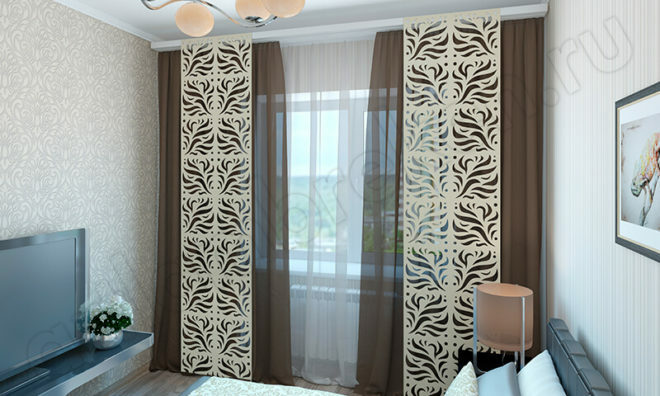
 In the design of each apartment, curtains are a touch that connects all the elements into a single picture. Their function is not only to hide from prying eyes or shade sunlight. Correctly selected window textiles decorate the room and bring a certain zest to any style of apartment decoration. And Japanese curtains, due to their characteristics, can perform other functions. Also see the photo at the end of the article.
In the design of each apartment, curtains are a touch that connects all the elements into a single picture. Their function is not only to hide from prying eyes or shade sunlight. Correctly selected window textiles decorate the room and bring a certain zest to any style of apartment decoration. And Japanese curtains, due to their characteristics, can perform other functions. Also see the photo at the end of the article.
Description and characteristics
The design of Japanese curtains consists of several even fabrics that are attached to a system of curtain rods. The shape can be supported by special frames or just inserts at the bottom that act as a weighting agent. They can be shifted according to the principle of overlapping panels along several rows of the cornice, creating additional interior decorations. The screens can be moved manually or electrically. Some parts of the structure can be fixed, if this is their feature. Photos are presented below.
Attention! Earned on our website kitchen designer
. You can familiarize yourself with it and design your dream kitchen for free! May also come in handy wardrobes designer.
Peculiarities
-
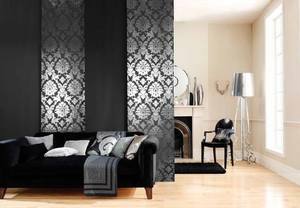 The canvas resembles a wide panel fixed on top, so they look a bit like blinds. The standard width is 60 cm, but models up to 1 meter wide are available. Control is carried out by means of a cord or chain. The panels only move like a screen.
The canvas resembles a wide panel fixed on top, so they look a bit like blinds. The standard width is 60 cm, but models up to 1 meter wide are available. Control is carried out by means of a cord or chain. The panels only move like a screen. - Natural materials - linen and cotton, bamboo fragments and straws are also used. Modern popular models are made from a mixture of natural raw materials and synthetic fibers.
- Their color is usually chosen from pastel colors. Large and bright, but unobtrusive drawings are acceptable to create accents.
- The fixation of the canvases is different from the traditional one. They are attached with sliders, which should be invisible. Because simplicity and minimalism are the main characteristics of the Japanese style.
- Cornices for Japanese panels also differ from the usual ones and represent a system of several aluminum strips into which special holders are inserted. Movement is provided with a cord. They are attached to the ceiling or wall.
Cornices can consist of several rows:
- Double-row ones consist of two structures, one is translucent, and the other is dense. And also in two contrasting or complementary colors.
- The three-row system allows you to combine three canvases of different materials. Moving around the room, you can zone the space using different colors.
- Four-row and five-row are used for non-standard door and window openings.
However, it should be added that multi-tiered complex structures are not quite suitable for a laconic style.
Advantages
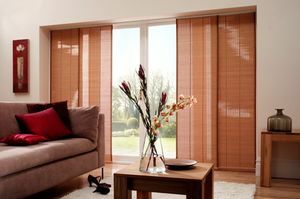 Curtains in this style in the interior of apartments are gaining popularity due to their many advantages:
Curtains in this style in the interior of apartments are gaining popularity due to their many advantages:
- Practical: they are easy to clean, there are no folds for dust accumulation.
- They are quickly assembled, and the elements can be replaced.
- Versatility: the standard size is suitable for both window openings and room zoning.
- Look great with panoramic windows.
- Conciseness: simple geometry and a minimal amount of color fits well into modern interior designs.
- A wealth of options: the variety of colors makes them suitable for different cuisines.
- The simplicity of the design makes it possible to make them yourself.
Japanese panel curtains in the interior: style
Curtains in the interior perform several functions at once:
- hide life in the apartment from prying eyes;
- reduce the amount of light;
- decorate and create comfort.
Therefore, it is worth choosing them in accordance with certain rules so that this element harmoniously fits into the overall style. Such laconic designs are harmoniously combined with minimalism, ecological or ethnic design.
Living room
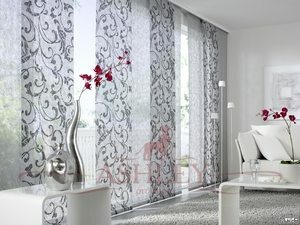 Curtains in this style will well emphasize minimalism in design. Since this type of apartment decoration does not imply the use of a large amount of textiles, such curtains will replace the screen and become a continuation of the walls, thanks to the panel view. If the walls are painted light beige, then you can make panels in two colors - white and brown with a white or beige pattern of geometric shapes.
Curtains in this style will well emphasize minimalism in design. Since this type of apartment decoration does not imply the use of a large amount of textiles, such curtains will replace the screen and become a continuation of the walls, thanks to the panel view. If the walls are painted light beige, then you can make panels in two colors - white and brown with a white or beige pattern of geometric shapes.
In addition, you can divide the room into zones using them, a photo in the living room interior is presented below. Panels can be moved and spaced. To do this, the cornices must be placed not along the window openings, but attached at the junction, for example, of the living room and bedroom.
If the style of Japan is chosen for the design of the living room, then hieroglyphs or a branch of blooming sakura will look harmonious on the panels. It is worth noting that this style requires almost asceticism, for example, floor mats instead of furniture. Recently, however, they began to use traditional living room interior items: a sofa and armchairs.
High-tech hi-tech style assumes restrained details, strict forms and the latest developments. Therefore, panels made of modern metallized or anti-reflective materials will come in handy. And the multifunctionality of each item, which is mandatory for such a design, will emphasize the possibility of their use in as a partition for dividing a space, a decorative cover for a niche or an original door in pantry.
As for the color palette, any metallic shades will be suitable - silver, gold, copper, liquid mercury. And also white and graphite. If the room has accents in the form of bright accessories, then Japanese panels can also be matched.
Kitchen
A kitchen is a place for preparing and eating food, so its design must meet such characteristics as comfort, convenience and functionality. The panels meet these requirements: they are easy to clean and function as ordinary curtains and decorative panels.
It should be noted that this type of curtain will not work:
- for a cramped kitchen with small windows;
- for a style that demonstrates luxury, with lots of details and embellishments;
- for a rustic style, country or provence.
Since there is an abundance of odors, steam and greasy splashes in the kitchen, you need to choose curtains from materials of a mixed type with the addition of synthetics, although the panels assume the use of natural materials.
Bedroom
 If the bedroom has large window openings and enough space, as well as a minimalist style is used in the design, Japanese curtains will be a good alternative to lush curtains. Photo of the bedroom below.
If the bedroom has large window openings and enough space, as well as a minimalist style is used in the design, Japanese curtains will be a good alternative to lush curtains. Photo of the bedroom below.
They are also suitable for lovers of comfortable simplicity in the design of rooms.. In addition, the length of the canvases can vary - more often they reach the floor, but they can also be of medium length - up to the windowsill. Several lengths of curtains can be combined.
For a bedroom, they can become a decorative panel behind which a TV or a wardrobe with things will hide.
Children
Despite the simplicity and laconic design, these curtains are also suitable for a nursery. With their help, you can separate the play area from the sleeping area or organize a workplace for the student. Teenagers will love Japanese curtains with cityscape décor.
The design features and laconic design make Japanese curtains an excellent choice for a variety of design solutions. Easy to clean and easy to change colors of panels will serve for many years.
DIY Japanese curtains: step by step instructions
This type is a simple structure that can be made by hand. But the cornice needs to be purchased.
The following is a do-it-yourself master class on sewing them.
The standard width is 60 cm, these are the dimensions of the cornices for them. The main difference from conventional curtains:
- lack of assemblies along the eaves;
- clamps and other clamps are not used;
- should be rectangular.
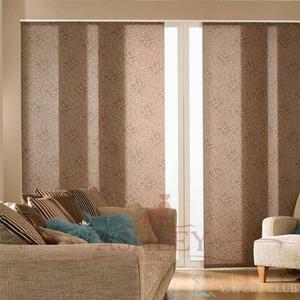 Usually natural materials are used - linen, cotton, straw. The color palette is usually pastel shades or with a large geometric pattern.
Usually natural materials are used - linen, cotton, straw. The color palette is usually pastel shades or with a large geometric pattern.
After the fabric is selected, we proceed to cutting. You need to measure the width of the window opening in the room and divide by 60, you get the number of panels. If the width is not a multiple of this figure, the curtains will be located on the eaves, overlapping each other.
Then measure the suggested length from the eaves down and add 10 cm to the seams.
When multiplying the resulting length by the required number of canvases, you get how much fabric you need to purchase with a width of 60 cm.
Cut out the canvases to size, process the sections and sides of the products.
The eaves have a strip with a special Velcro, called velcro. It needs to be ironed out, then put along the upper edge of the curtain so that the canvas and Velcro lie face up and stitch it to the upper allowance.
Now you need to bend the resulting strip to the wrong side and sew again. Make a drawstring for the weighting material from below.
It is good to smooth the curtain, it should be perfectly flat. Insert the weighting material downwards, and the upper bar into the previously fixed cornice.
Such curtains, purchased ready-made or made independently, will delight and create a unique atmosphere of comfort in the room.
Photo: how curtains look in the interior
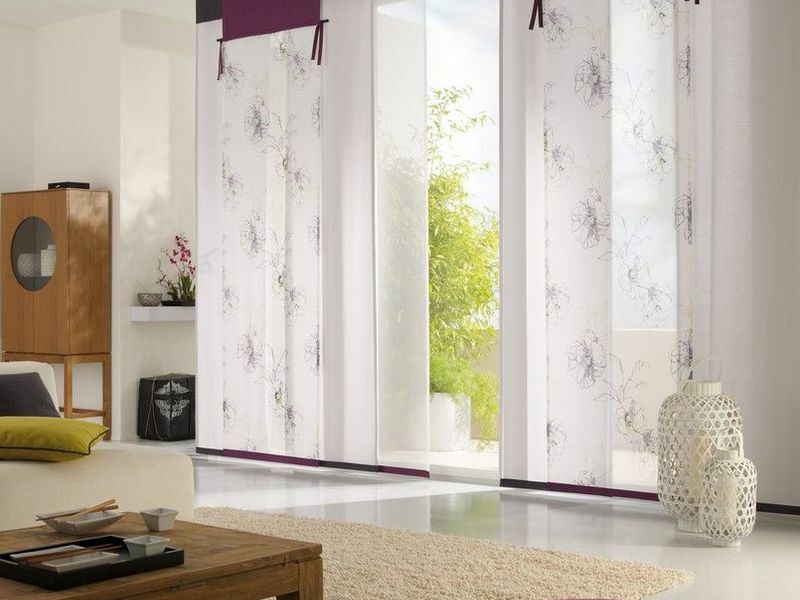
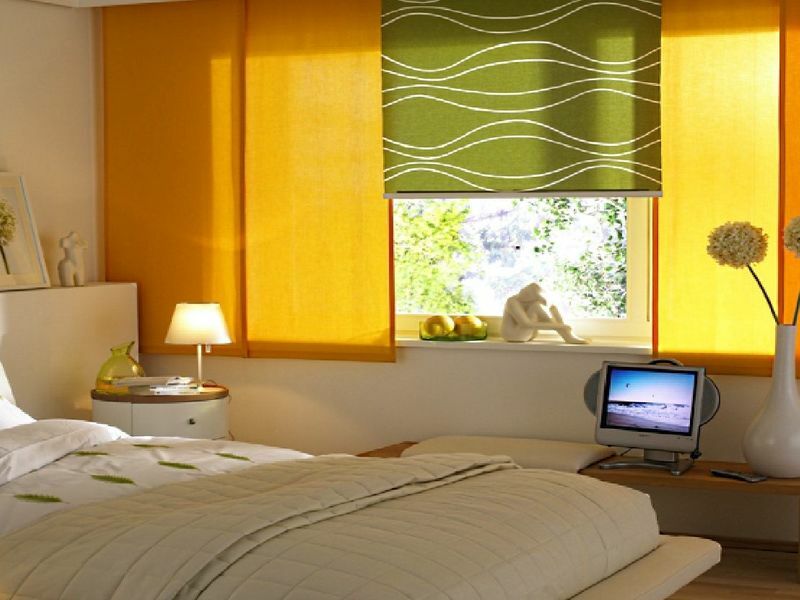
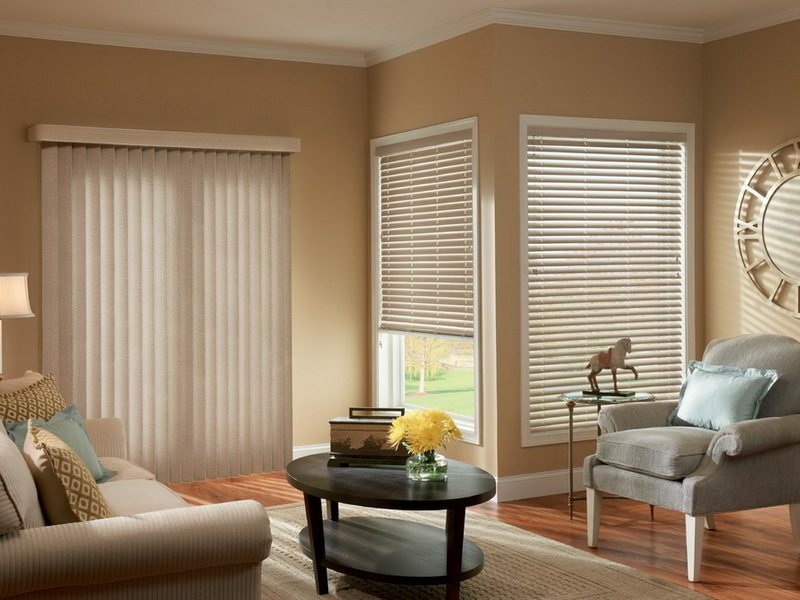

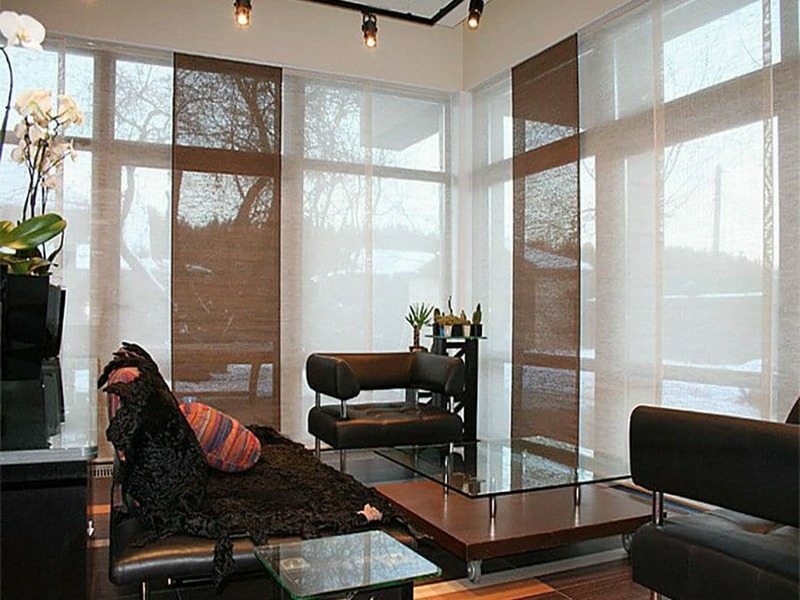

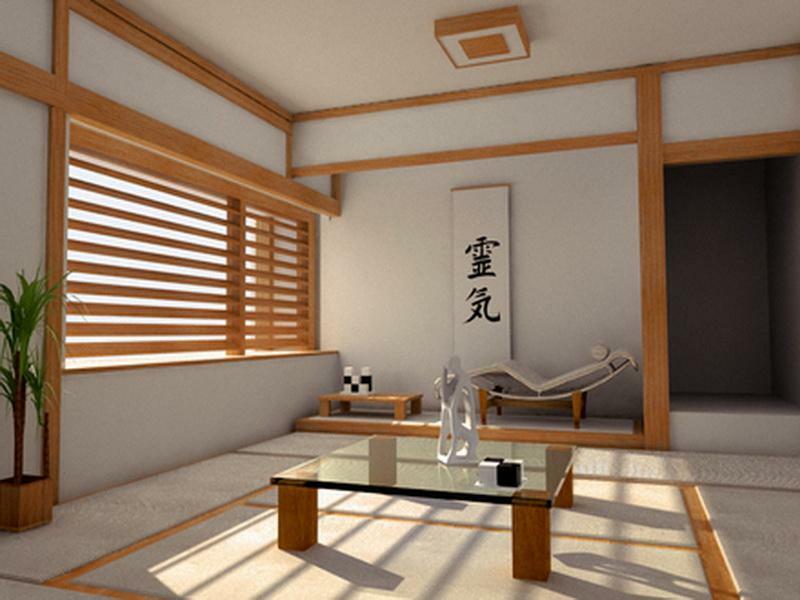
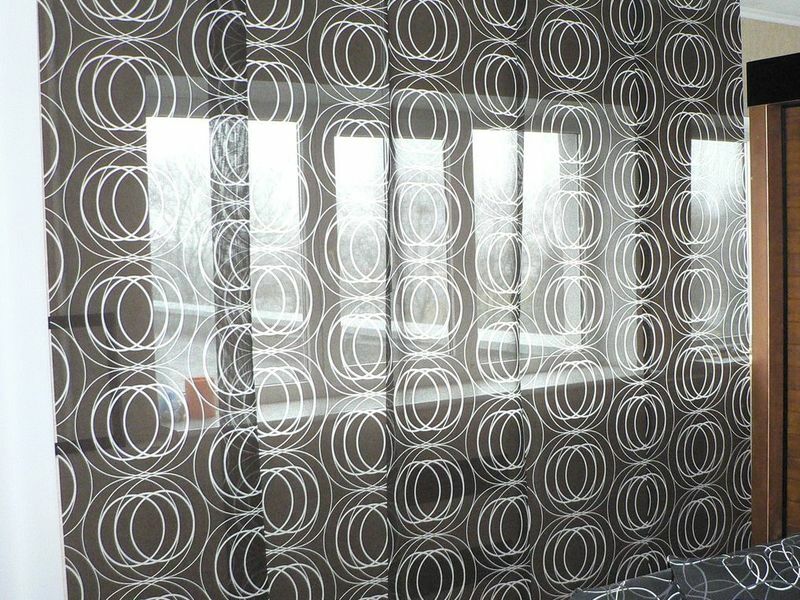

average rating 0 / 5. Number of ratings: 0
No ratings yet. Be the first to rate.